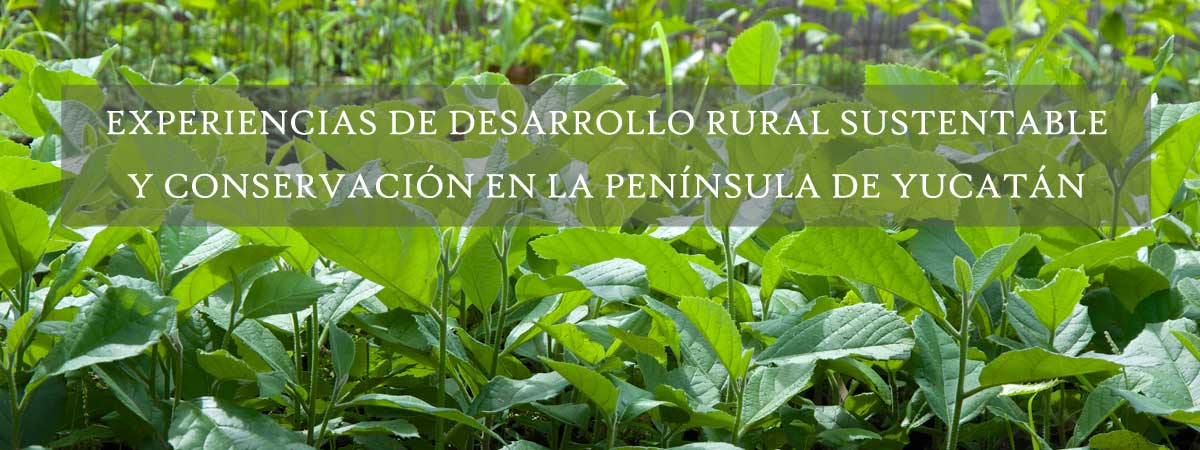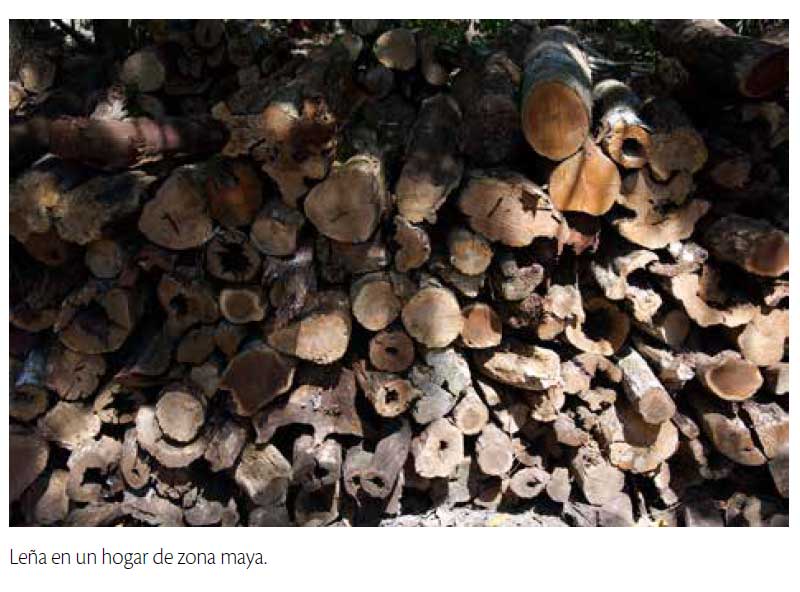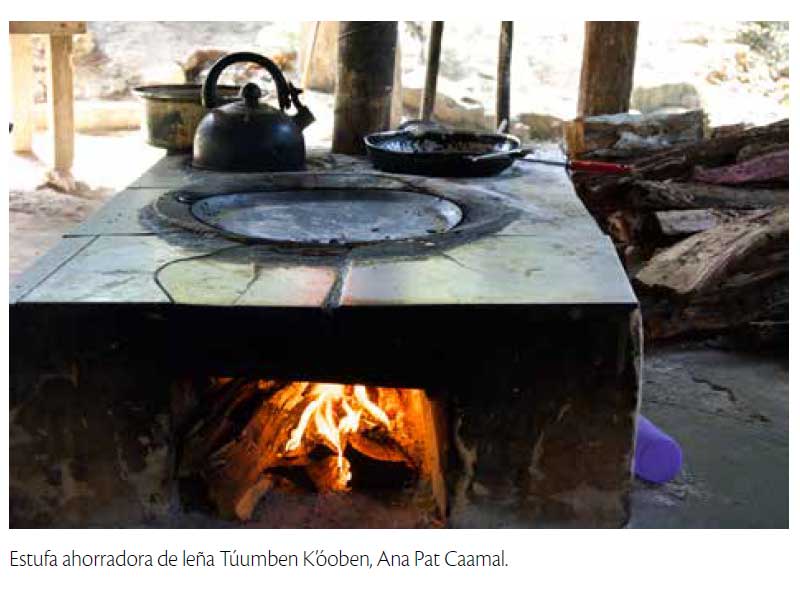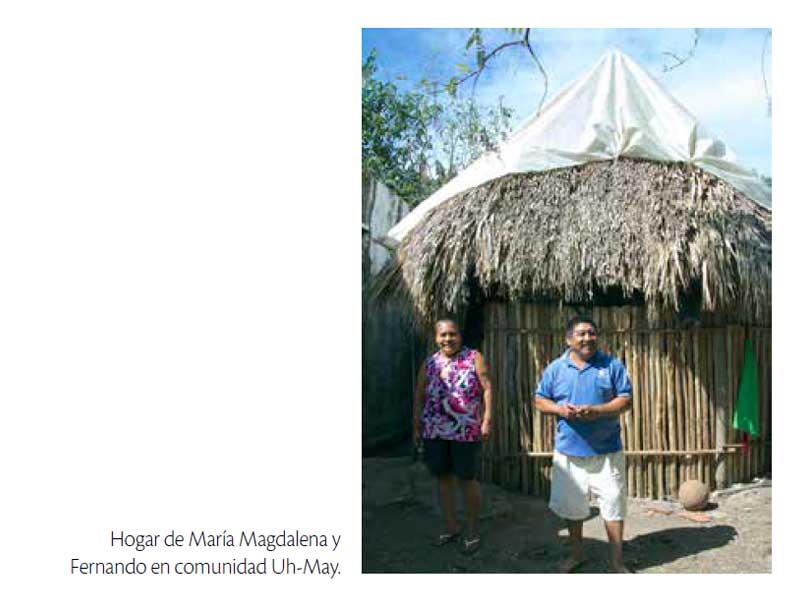Wood saving stoves

Family members have to go to travel often and significant distances into the forest to look for firewood, a resource that is becoming scarce in some communities. With a Túmmben K’óoben stove, finding firewood takes place only every two or three weeks, which also reduces pressure on the resource. Moreover, U'yo'olché developed the stove through a participatory design process, side by side Mayan women the stove was adapted to meet cultural needs, and has developed a business model that makes this eco-technology affordable to the families.
The project idea emerged during a workshop on carbon sequestration, in which a researcher native to Michoacan spoke about strategies to fight climate change and showed a picture of wood saving stoves. At the workshop there were people from Felipe Carrillo Puerto ejido, and it was them who asked to have one built in their community. The first one was built in a nursery of the ejido, and the technology attracted much attention. A first lesson was that the constructed model (Patsari) and the materials used were not suitable for the region. An example of this is the absence of mud in the Yucatan Peninsula, which makes the use of partition walls very expensive. In addition, the model used was not appropriate to the ways of cooking in the tropics, a fact that became an important initial barrier for local technology adoption. Thus, it was decided to develop - in a participatory way - an appropriate wood saving stove for the Yucatan Peninsula. To achieve this, workshops were convened with construction workers (builders) and women cooks (users) who were asked to imagine the different components of the stove. With these ideas, prototypes were created, which were then tested by the local participants themselves in order to reach a consensus on the "best" technology. That is how the Túumben K'óoben model was born: with two large griddles to meet cooking needs, and built from the same materials with which the Mayan pyramids were constructed. This mix of local materials (sascab, lime, etc.) allows construction at home and easy repair if damaged. After this stage, U'yo'olché continued with the evaluation and gradual improvement of the Túumben K'óoben stove, in order to further improve the model and adapt it to the conditions of this Mayan region. "In 2006, says Dulce Magaña, project coordinator, we took on the task of revising the stoves that already existed in the region, in order to identify those that were never used, which ones were abandoned and which ones demolished. During the monitoring, 600 stoves were identified as working, some even with 9 years of use. If given maintenance the stove keeps working. But it was important to understand what had happened to the program where the stoves were abandoned".
Doña María Magdalena, beneficiary of a stove in Uh-May, explains that learning how to use the stove takes time. The first few times it is difficult because the stove is still wet, but the fire itself helps to dry it. “I suffered a lot, says María Magdalena, the tortillas ripped through and I thought I could never cook well, but everything changed after two weeks of use and now I wouldn’t change it for anything. My neighbors like it because there it does not emit smoke inside the house as with the traditional three-stone fire". Dulce adds that the problem of smoke in Mayan cooking is an important health issue. María Magdalena points to the ceiling and says, "Just see the guano palm ceiling where my old stove used to emit smoke, it is completely black with soot… just imagine how my lungs might be!" Her husband, Don Fernando, adds: "I used to go for firewood on my tricycle every two or three days, but now the load of a tricycle lasts two to three weeks. Imagine, I only have to ride for 2 km to go for firewood but a lot of people in Carrillo Puerto have to go travel at least 7 km, and as firewood is scarcer sometimes they even have to travel further". In 2011, U'yo'olché was unable to get additional grants to scale the initiative. However, convinced that the program could not stop, the organization and the leaders of the Túumben K'óoben initiative consolidated a cooperative that brought about major changes. The cooperative works with a revolving fund for materials, construction and maintenance, and the users can pay back with credit facilities. "This allows us to include more beneficiaries, but it is not easy for people who want to pay when elsewhere there are government subsidized programs", says Dulce, "but this was a key moment, the people who build the stoves are really convinced, they own it because they put resources, and since then we have not had any cases of abandoned stoves". The Túumben K'óoben team understands that the economy of the communities is going through many difficulties and the cost of the stove is relatively high, but when the beneficiaries cannot make their payment they try to get alternative financing. The inclusion of a local promoter was also instrumental in the project. A promoter is a woman leader of the community that monitors, motivates, organizes events, explains how her health has improved and shows her stove to whoever wants to learn. It is the case of Mrs. Ana Pat Caamal, promoter in Felipe Carrillo Puerto, who has for the last nine years opened her kitchen to those who want to see her stove and know about her experience. "One of the first things that I say, says Mrs. Ana, is that before this stove I lived with influenza and respiratory problems, and today I have no memories of being sick".
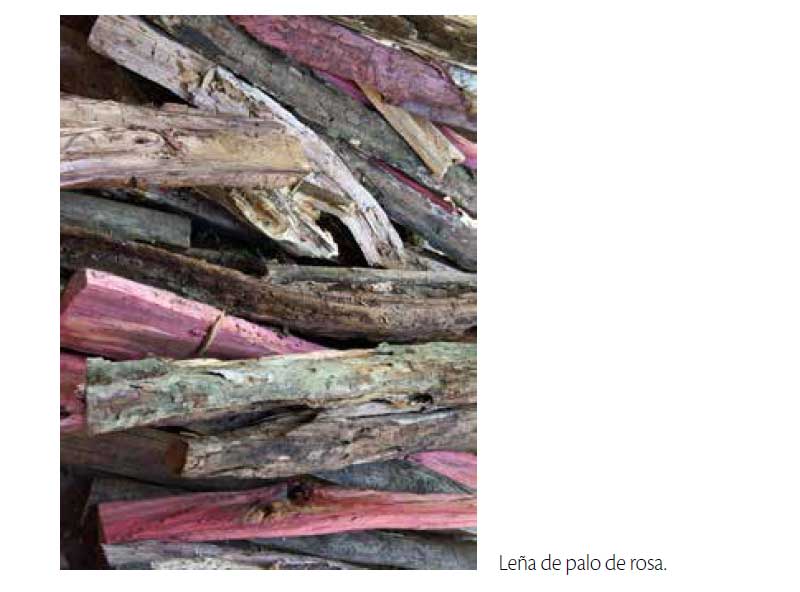 Lessons learned Stoves that were not used from the beginning were not built in the right place or with the right materials, and there was no training or monitoring. "Before Túumben K'óoben we did not follow up the way we do now, and it is necessary to spend some time teaching users how to use the stove". Dulce explains that the stove now comes with a visual manual and user training at the time of delivery. The challenge remains on how to pay monitoring, ongoing training and maintenance. "For these purposes the revolving funds implemented by the cooperative are not enough. We still need to seek co-financing, such as this year, when we entered a certification program for carbon credits through avoided emissions with the wood saving stoves”. Dulce also explains that key enabling factors include spending time with the people in their communities, understanding their needs and making changes to the stove to adapt it to the cultural environment. For example, a lot of people living in the Yucatan Peninsula have come from Tabasco, Campeche and Veracruz, and traditionally cook standing up, but the Mayan people cook on benches almost at ground level. "This seems like a trivial detail but it is really important, says Dulce, because at first all cooking stoves were designed for cooking standing up; we did not know that would mean a big cultural change. Today we offer the possibility of making an oven at ground level, it is optional". Something similar happened with the fact that the stove eliminates the smoke inside the house, which provides food preservation benefits. In the Mayan region refrigerators are not used, and it is very common for people to hang a basket above the kitchen, and place there tortillas, pepper, seeds, and sometimes a slice of pork over the stove and smoke the products in order to conserve them for a few months. The project team had to think around this and came up with a solution: cooks have the option of removing the griddle for smoking within the house. If the cook will be in the kitchen, she can place the griddle and the smoke will go up the chimney, but if she leaves she can leave the stove on with an open griddle for smoking. Dulce says that she is very happy with the results of the project and what she has learned. "A stove involves other important issues such as family environment, empowerment of women, happiness, among other things. How do you measure happiness? A family changes their life with a stove, and the best indicator that the project works is when we come to the houses and see that people are happy to share their experience." The project continues to evolve to include innovations. For example, although the benefits of the technology are known in detail at the household level, little is known about the impact on the forested area, the environment, and climate change. In the Yucatan Peninsula, firewood remains the main source of energy in rural communities, and there are signs of water scarcity in some regions with heavy deforestation or major demographic pressure. The Túumben K'óoben team has partnered with scientists from UNAM to investigate the issue of wood extraction, and model scenarios for future resource availability. With the results, the team hopes to propose public policy changes, with a focus on avoided degradation, but also to allow communities achieve energy security. In addition, the team aims to complement the installation of wood stoves with local and adapted strategies for resource management, such as management of t'olche' or reforestation with wood energy species. |
